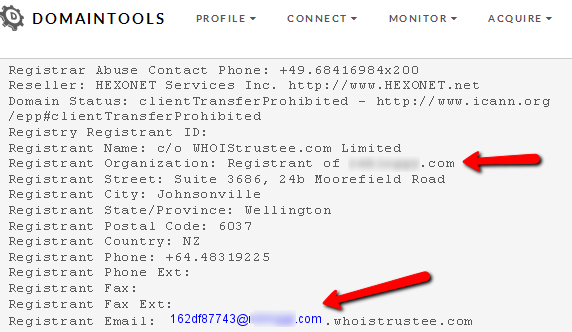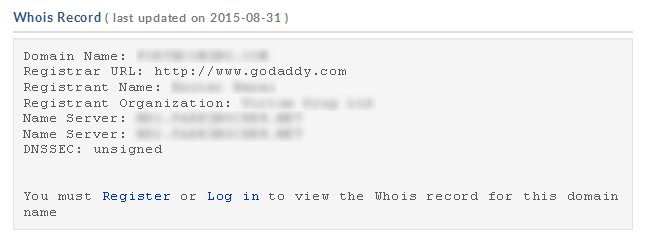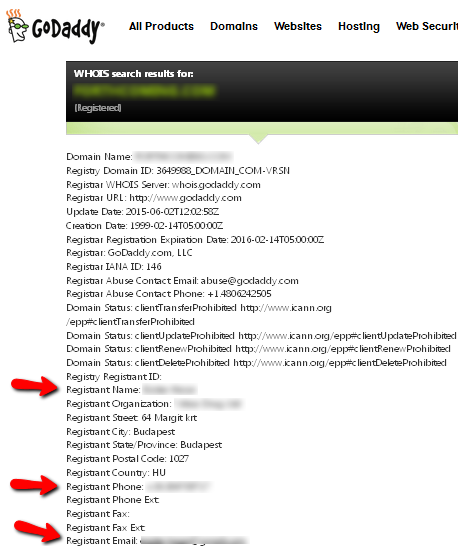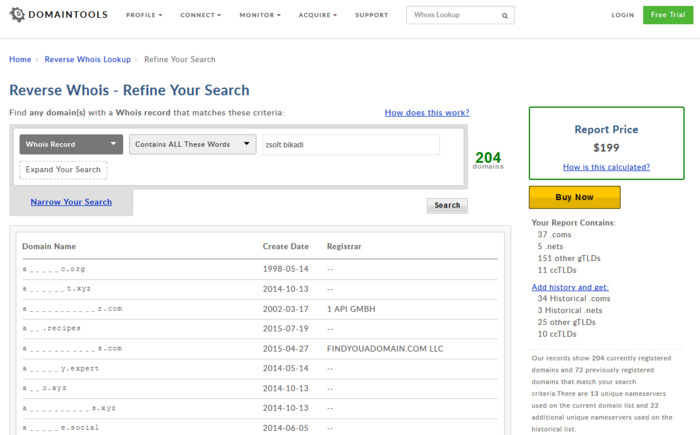There are many reasons why you might be interested who is the owner of a given domain. You might like the domain name and want to buy it. Or you would like to send an e-mail to the domain owner because of a business idea, an advertising deal, a complaint, etc. No problem, we will show you the way how to find the domain owner.
Find out who owns a domain
The process difficulty can be anywhere from very easy to impossible.
1, First option. Check the domain name owner in our built-in Whois search at the top of this page.
2, Second option. Go to the Domaintools Whois, which is a comprehensive Whois search tool and check the domain name there.
Check for the Registrant information. If you are lucky, you will find real e-mail address and phone number here so that was it, you are done.
I know that there are many bots out there looking for domain statistics this is why captcha is a must for Domaintools but I can go crazy from proving being human all the time, especially because sometimes really time consuming challenges have to be solved first. Domaintools is not the only one which provides detailed data for domains. Although not free, WhoAPI is worth mentioning among these tools, which provides domain ownership information and some additional data which is not available in Domaintools, like domain authority or Alexa rank. WhoAPI can be used for retrieving single or bulk Whois data or as the name suggests via an API.
3, Sometimes (depending on the Registrar) this information is not available to external Whois servers but it is still public. Registrar information is always available and Registrar’s have their own Whois search where you can find the missing information.
Check the example above. There are no detailed information about the Registrant but we knew that it is registered at Godaddy. Google for “GoDaddy whois” (or whatever is the Registrar name, “Tucows whois”, etc.). You will find the internet address of the Registrar whois, which is who.godaddy.com for our example. Check this address if the domain is registered at GoDaddy and the contact data are listed here.
4, All third-party Whois tools and Registrars’ Whois use data from Registries. Since one of the task of the Registries is to maintain a database for the given extension with the domain name and its owner, the most authentic information can be found at the extension Registry. Below you can find a list of the Registry Whois urls of the most popular extensions:- Verisign’s Whois for .com, .net, .tv, .cc, .edu, .jobs and .name: http://www.verisign.com/en_US/whois/index.xhtml
- PIR’s Whois for .org: https://pir.org/products/org-domain/#domain_form
- Uniregistry’s Whois (many new TLDs): https://uniregistry.com/whois
- Donuts’ Whois (many new TLDs): https://whois.donuts.co/Index.aspx
- Afilias’ Whois for .info domains: http://www.info.info/whois
- Neustar’s Whois for .us domains: http://www.whois.us/whois-gui/
- Neustar’s Whois for .biz domains: http://www.whois.biz/whois-gui/
- .xyz Whois: http://nic.xyz/whois
- .club Whois: http://whois.nic.club/whoismtld/whois/

Registrant email is masked when a Whois guard is used for the domain. This email address might work.
Things are getting harder at this point and you cannot be sure that you will find out the owner if the domain is whois guarded. You still have several options.
- There is still an email in the Whois search (see figure above). It should work but not always does. You can try to contact the owner using that email and the owner will reply if he wish and got your message.
- Check corresponding social accounts. It is possible that while the domain is Whois guarded, data are visible on a Facebook Page or Twitter account.
- Check Flippa, Sedo and GoDaddy, maybe the domain is listed for sale. If yes, click on the sale link and you will most probably find out the identity of the seller or can contact a domain broker at least who is in contact with the seller.
- Is the domain used for a website? If so, you should find evidences on the website itself (Contact page, About page), who is the domain owner.
- Maybe the domain is not used currently but it was active once. Check Wayback machine snapshot and find the latest active period and check for an about page there.
- Google search is your friend! Google for the domain name in quotation marks. There is a chance that you will find something useful.
- Find out the IP of the domain. Do a reverse IP lookup to find out what other domains are running on the same IP. This method is only useful if an active website is running on the domain. If you find other domains running on the same IP, there is a high chance that the owner is the same, too, since same IP means same server. So find out the owner of the other domains on the same IP with the methods listed above!
- If there is a trademark issue with the domain name and you want to start an UDRP process against the Registrant, Whois guard will be lifted and data became public.
Since in most cases there is no point to register a domain if it is not used for a website or listed for sale, one of these methods will help to reveal the domain owner almost always. Feel free to comment if you don’t find the owner of a domain with these tips, we are here to assist you.
Reverse Whois Lookup
It is possible that you are interested in the reverse case, i.e. what kind of domain are owned by a given person. Registries don’t provide this search functionality, therefore only third party Whois services can be used for this purpose. They collect as much Whois data, as possible, collect them into a database and provide a reverse lookup report. Since it is not supported by the Registries, data might be not complete and can vary service by service. Some recommended options:
- Reverse lookup by DomainTools. It is quite expensive and comprehensive at the same time. E.g. it costs $200 to list my domains.
- Whoisology is a bit less accurate but working. It will show you some domains in advance and 1000 domains for $5.
- Don’t want to spend a dime? Use Google! An example search: site:domaintools.com +”[email protected]” You will find some domains this way, maybe 10% of the owned domains by that e-mail or name.
Bulk Whois Lookup
It is possible that you want to check the owner of many domains at once. Maybe not the owner field is your main interest but the creation age of the domain, since aged domain can worth more than recently registered.
- If you are interested in less than 100 domains, you can try a relatively reliable web service. Please note that since Whois search is rate limited everywhere, it is almost impossible to develop a working and free bulk tool for this purpose.
- For more domains, the most ethical way is to use the Registry’s API. E.g. Verisign has a free API with quite high limits, although not all Whois data are returned by the API.
Conclusion
If the domain is not Whois guarded, it is really easy to find the owner. Even for Whois guarded domains, there is almost always a way to find the real owner by using our tips.





